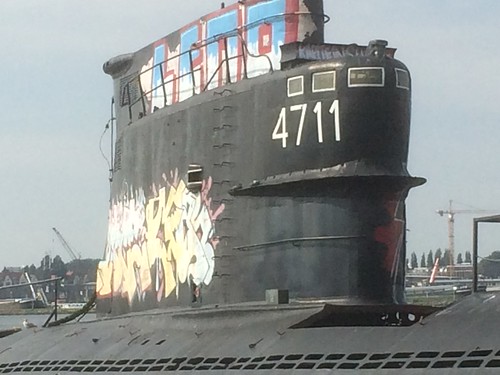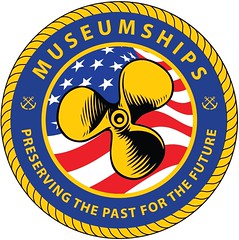
|
|
SUBSIM: The Web's #1 resource for all submarine & naval simulations since 1997
 |
SUBSIM: The Web's #1 resource for all submarine & naval simulations since 1997 |
 01-01-21, 04:56 PM
01-01-21, 04:56 PM
|
#1 |
|
Sub Test Pilot
|
Project 611 NATO code name Zulu
 IMG_0267 by B Shaw, on Flickr IMG_0267 by B Shaw, on FlickrWith the conclusion of the Great patriotic war (World War Two), the allies set about rounding up all the advanced technologies the Germans had developed. What the allies acquired in terms of Naval technology was leaps and bounds ahead of anything the allies had during the war and in truth some of that technology remains in service to this day. The most advanced German submarines those being Type XXI (Pictured) and Type XXIII became the model on which all major navies emulated in the first generation of post war submarines and most importantly the shape of things to come.  Wilhelm Bauer Type XXI U-Boat by B Shaw, on Flickr Wilhelm Bauer Type XXI U-Boat by B Shaw, on FlickrWith most of the Soviet economy geared towards producing nuclear weapons after 1945, little funds were appropriated to build new vessels until 1948-49, thus Project 611 while design started as early as 1946 they didn’t enter production until 1950. The first boat B61 did not enter service until 1952. With NATO formed in 1949, the idea came about to track each platform and asset with code names, the project 611 was no exception she was codenamed Zulu. The Project 611 Zulu was a big submarine, she had a length of 90 meters, a beam of 7.5 meters and a draft of 5.2 meters, her displacement of 1,900 tons on the surface and 2,450 tons submerged making them larger than the type XXI. The project 611 Zulu boats were powered by three type 37D diesel engines, each engine produced 2,000hp giving a total of 6,000hp while surfaced and three electric motors which two were PG101 1,350hp and a single 2,700hp PD102 totaling 5,400hp electric motors when submerged, they also had a single 140hp PG104 motor for economical running. This gives the Project 611 Zulu a top speed of 18 knots surfaced and 16 submerged using three five blade propellers (in the finish started off with the outer 2 screws being 3 blade and the center 4 blade). The Project 611 was capable of traversing 22,000km at 9 knots making it ocean capable indeed these submarines were found deep in the Atlantic and Pacific, they could also make 440km knots submerged at 2 knots. By the end of the 1960's all boats had been equipped with Snorkels which made life for the 72 man crew on a voyage lasting up to 75 days a bit more bearable in some respects. The Project 611 boats were initially rated to 200 meters however, when they started modifying these boats in the 1960’s these figures were revised and limited some as shallow as 150 meters. Overall, the project 611 was not a vast improvement over the type XXI, but their armament was. The project 611 Zulus all had six bow 21in and 4 stern 21inch torpedo tubes for conventional torpedoes, and had space for 22 reloads or, she could carry 32 AMD-1000 mines. Unremarkable you might think, pretty standard for the day, however; six of the boats B62, B73, B78, B79 and B80 were converted in 1956 to Project AB611 NATO codenamed Zulu IV. What makes this such a special project you ask? On September 16th 1955 the project B611 Zulu IV B-67 became the worlds first submarine to launch a ballistic missile (Regulus was a cruise missile). The Missile a R-11 Zemlya (Grau index 8A61) NATO codename SS-N-1 Scud A was first tested at Kapustin Yar before being mounted onto the submarine. Like Regulus the submarine had to surface to fire the missile ultimately becoming vulnerable to aircraft and ships, the missile itself would go on to be used in some of the most modern wars, notably desert storm. The other draw back to the submarine was that she could only carry two missiles, they also had to be raised clear of the sail where they were stored. The short comings of the Zulu became very clear to the soviets on the morning of May 29th 1959 when the USS Grenadier SS-525 in company with a ASW Patrol plane from Iceland forced a Zulu IV to the surface by trapping her for over nine hours. This meant the Zulu had less endurance capability than the GUPPY modifications and ultimately would lead the Soviet Union to focus on building nuclear submarines. The project 611 boats still had their uses though In March to October 1968, the eight boats of the 161st diesel-electric submarine brigade under the command of L.D Chernavin too the group past the UK undetected then into the Atlantic, they passed through the straight of Gibraltar and into the Mediterranean. The submarines would practice mock attacks against the cruiser Moskva and the Galkin before putting in at Alexandria Egypt. once completed they returned home to the Northern fleet. The eight boats that took part were: B-65 , B-74 , B-75 , B-76 , B-77 , B-80 , B-82 , B-91 Project 611 Zulus remained in the Soviet navy and over their lives were modified, in all there were fourteen modifications of the original but only five ever noted by NATO. The project names were: Project 611RU: modified to test new sonar called Rubin for Project 611 Anchar (NATO Codename papa) B-71 is the only submarine converted between 1963 and 1964. Project 611RE: Modified to test the towed array sonar Rassvet and the Kerch sonar complex only B-68 was converted between 1964 and 1965 Project 611RA: Re-modified from a project 611AV the B-67 later named Rosta (Murmansk) SRZ-35, was modified to test out the new Radian 1 mine detection equipment. Project AB611S: The B-78 Murmansk Komsomolets was modified in 1968 to test the Astro-optical navigation system called Symbol, this was a precursor to the PIRS system. Project AB611E: One boat B-89 named Vladivostok was rebuilt between 1967 and 1969 to test the SJSC Yenisei and SAS Lurch system, while also testing new Auxiliary power and air conditioning units as well as the Sila N navigation systems. AV611K: The B-70 was re equipped in 1970 to test out the new Shtyr-M space navigation system AV611Ts: B-62 was updated in 1969 to test the Tsunami-B communications equipment for marine communications Project AV611D: B-78 was converted in 1972 and re equipped with the Dniester sensors which monitors for the hydro-physical fields of a vessels wake, as well as hydrodynamic pressures. Also fitted was the Dnepr sensors which is used to test for hydroacoustic signatures of ships and submarines. Another system tested was Terek which measures the wake and wave velocity from the sea and also changes by ships or submarine, also introduced was the SID which measures the parameters of the vessel being tracked. New depth stabilization “Mramor-2” was also tested along with GAS MG-15 and PMG-15 along with additional noise reduction measures. All of this would later culminate in the SOKS system. Project 611 P: B-69 Kronstadt Kmolz (later BS-69, BS-891 & BS-82) was designed to test new towed deep sea vehicles for special purposes. The Project 611 P used the deep water complex known as archipelago and seliger. Its noted the submarine differs in its appearance to all the other project 611 boats substantially. Project P611: B-64 was modified by adding a cylinder to the aft casing to test the P10 missile and its guidance system, despite the test being a success the missile was not adopted the P5 Pyatorka (NATO SS-N-3C shaddock) was produced instead. The cylinder did however get produced and found its way onto the project 644 NATO Whiskey twin cylinder class boat Project B611: B-67 Was the test boat for launching the worlds first ballistic missile. Project AB611: These boats were modified to be the first SSB type vessels six in total were converted. Project UTS611: were converted to perform training roles a total of ten boats in all. The project 611 boats were all phased out by the late 1980’s and like many ships and submarines in the former soviet union were left to rot, however; one submarine the B80 escaped to Holland where she became a night club and a bar, she the very last Project 611 boat, sadly in 2020 the B80 was towed to Ghent and scrapped. The layout of the boats were as follows: Compartment 1: Torpedo room with spare torpedo racks Compartment 2: Officers wardroom, GAS equipment, shower, batteries Compartment 3: Central command post, navigation center, torpedo fire control system Compartment 4: Galley, Mess, Radio room, stores, batteries Compartment 5: Three diesel engines and two compressors Compartment 6: three electric motors Compartment 7: aft torpedo room, junior rates quarters, under floor small electric motor  IMG_0269 by B Shaw, on Flickr IMG_0269 by B Shaw, on FlickrA rather tatty sail  inside by B Shaw, on Flickr inside by B Shaw, on FlickrInside the all weather bridge  upto bridge by B Shaw, on Flickr upto bridge by B Shaw, on FlickrLooking forward from the aft interior of the sail  zulu escape by B Shaw, on Flickr zulu escape by B Shaw, on FlickrEmergency buoy
__________________
DONT FORGET if you like a post to nominate it by using the blue diamond    Find out about Museum Ships here: https://www.museumships.us/ Flickr for all my pictures: https://www.flickr.com/photos/131313936@N03/ Navy general board articles: https://www.navygeneralboard.com/author/aegis/ |

|

|
 01-03-21, 07:02 AM
01-03-21, 07:02 AM
|
#2 |
|
Navy Seal
 |
As usual, there is such a volume of information here, that it necessitates a number of re-reads to fully grasp the significance of the information. Great writing as usual . I think I'm going to save this article for reference material.
Great article, Blair. 
Last edited by Commander Wallace; 01-03-21 at 07:16 AM. |

|

|
 |
|
|
